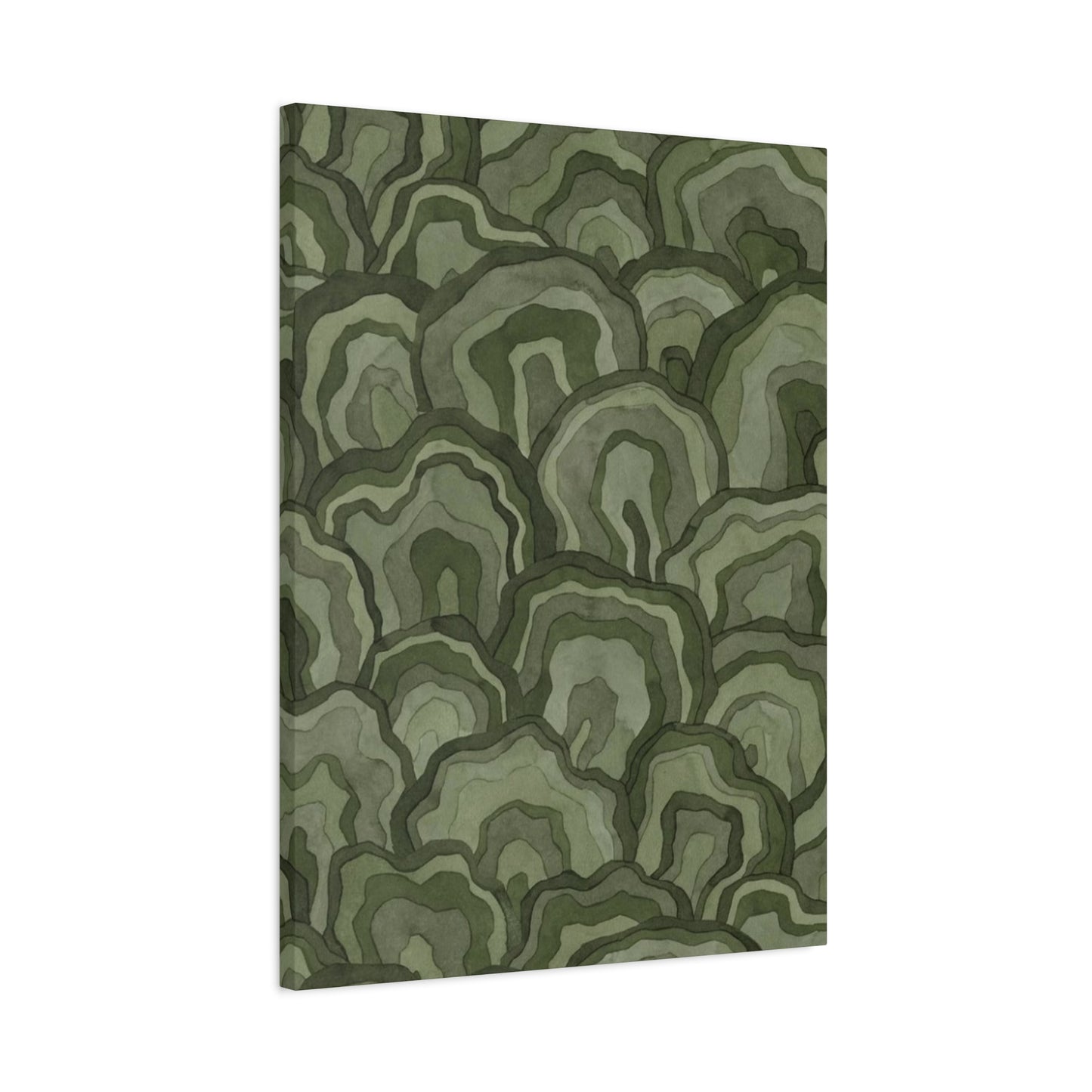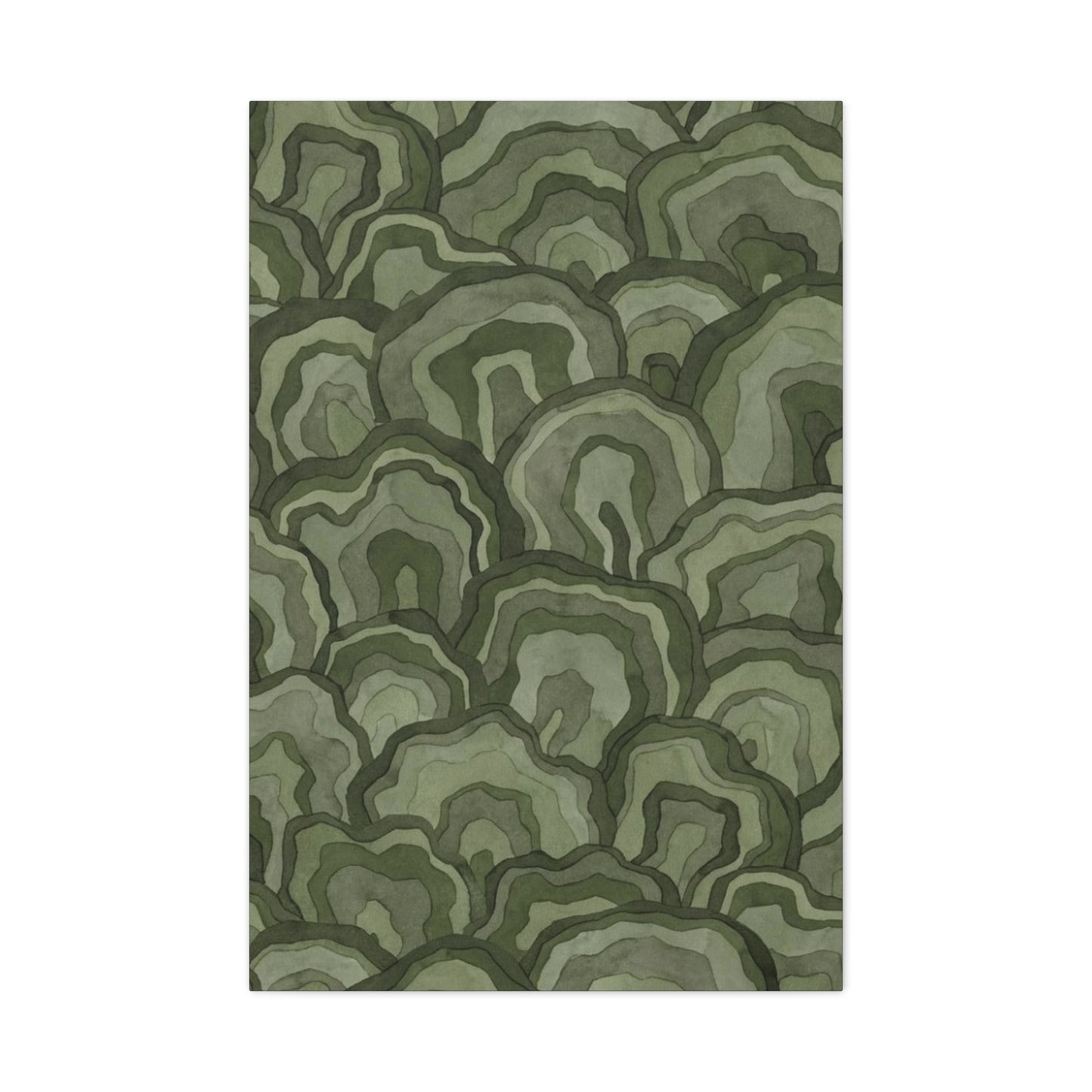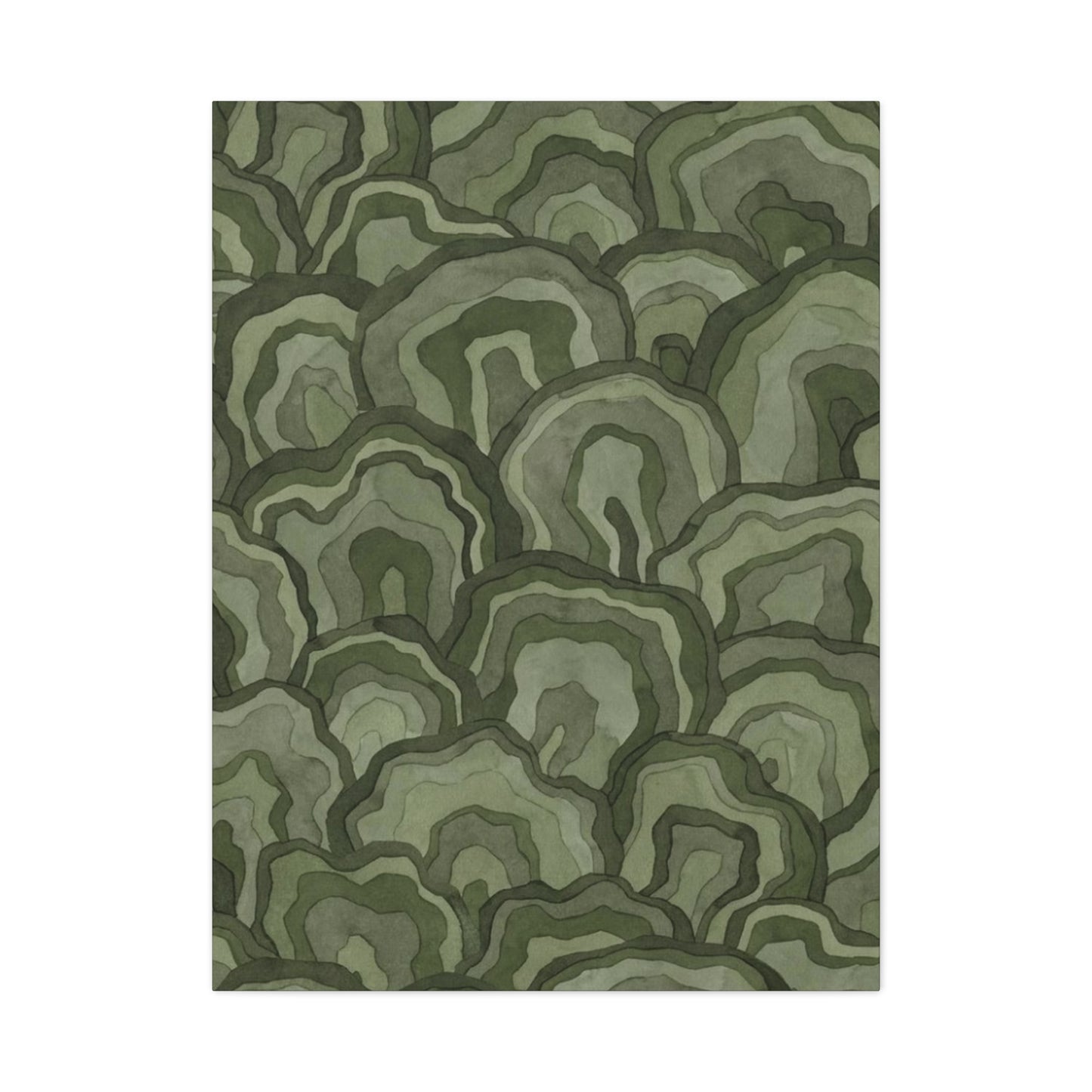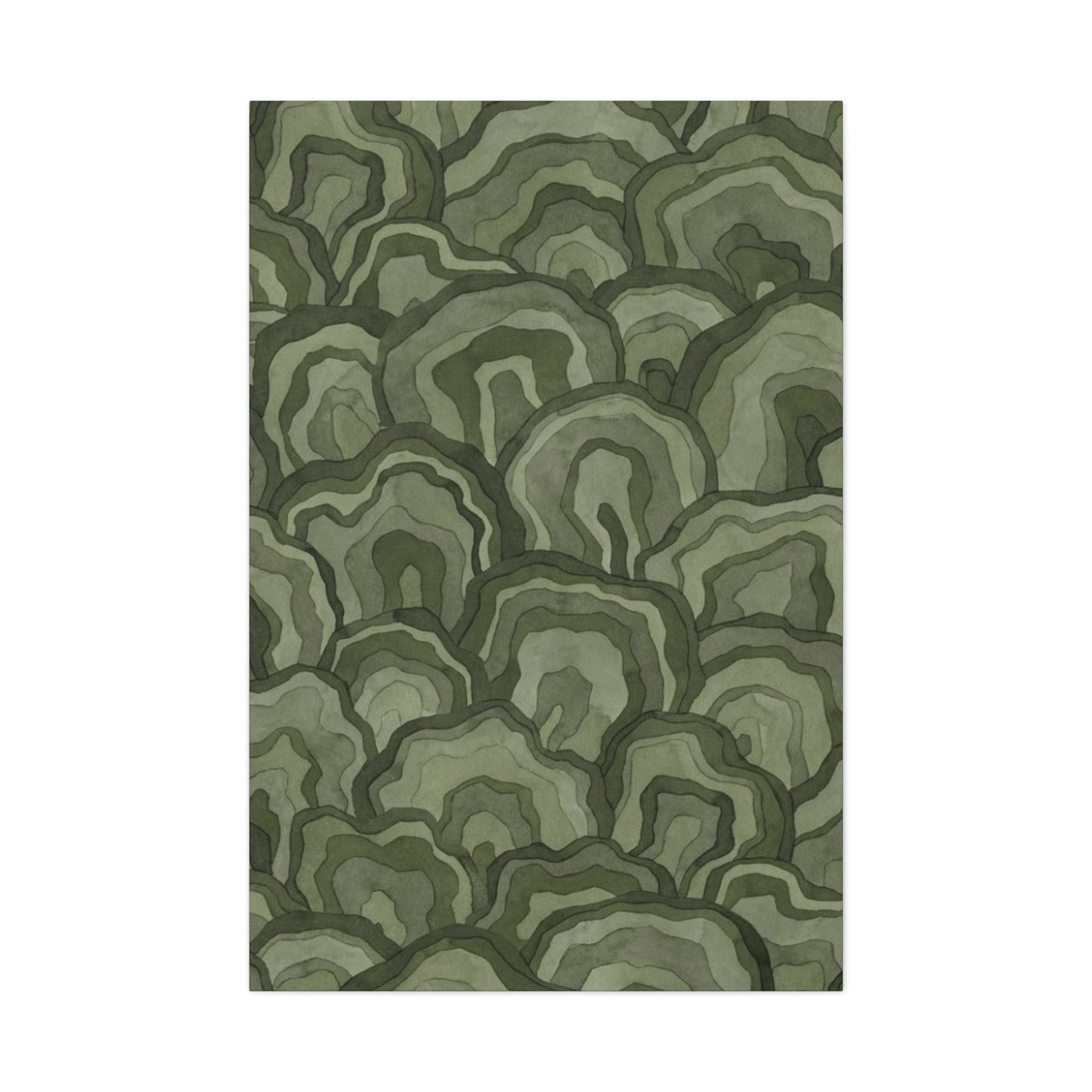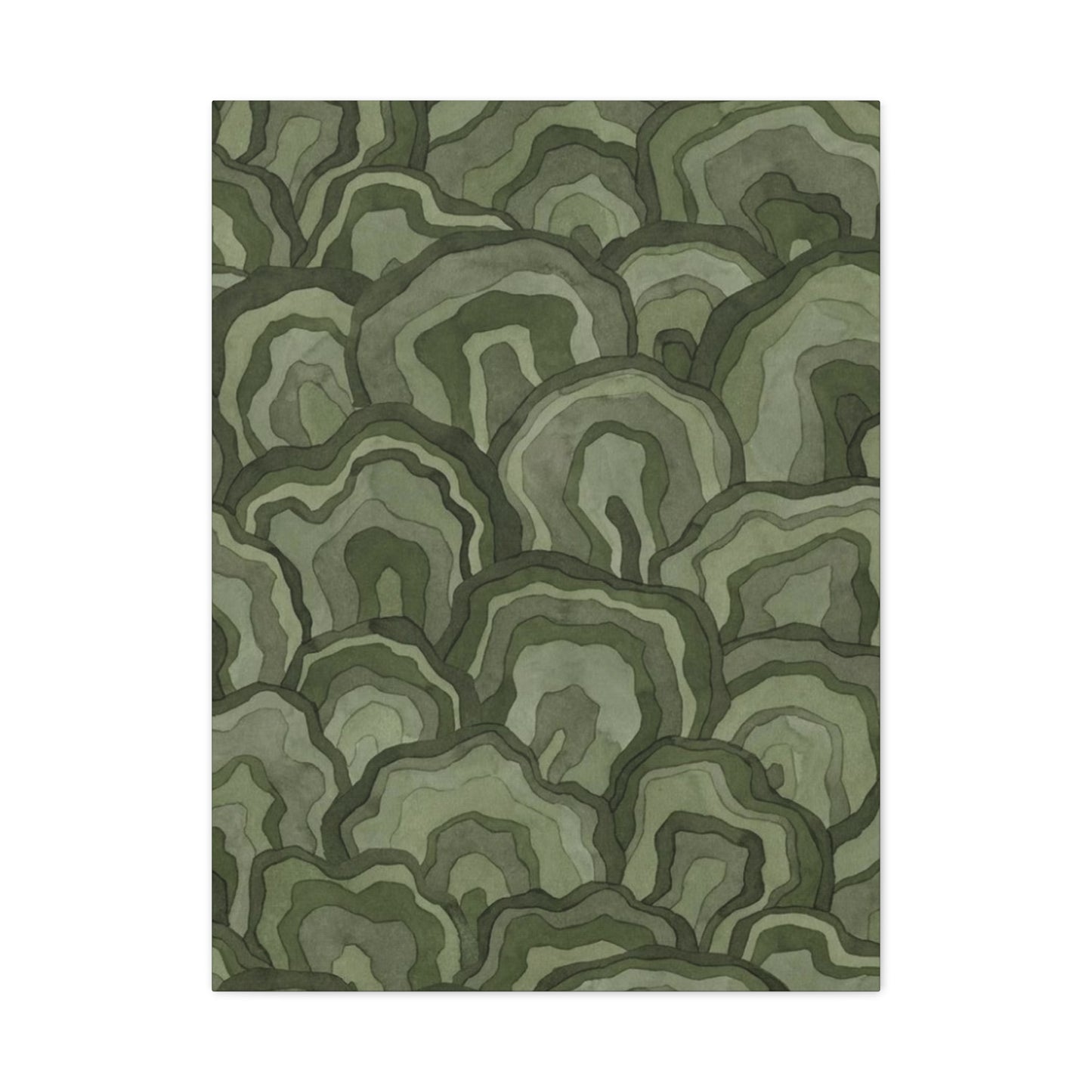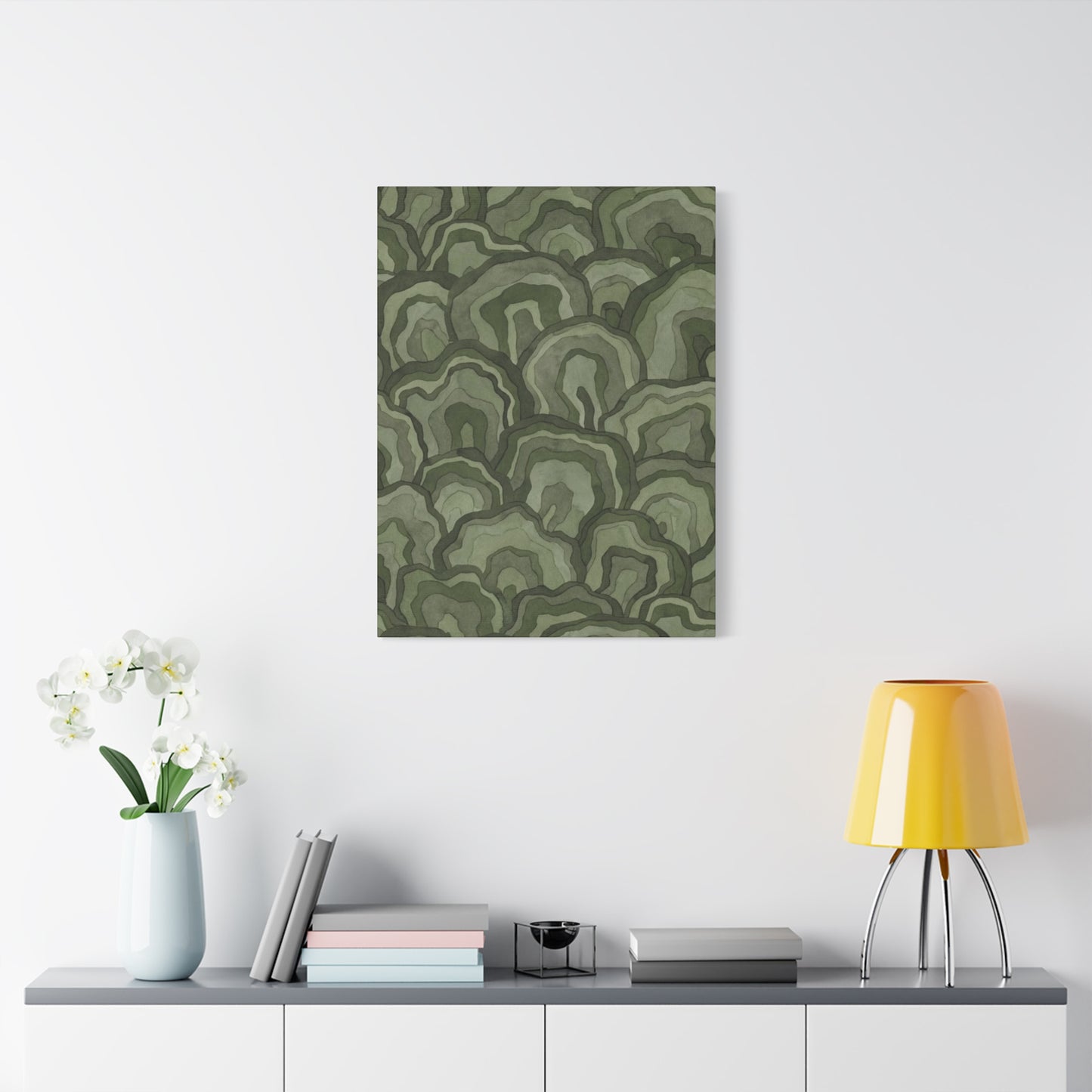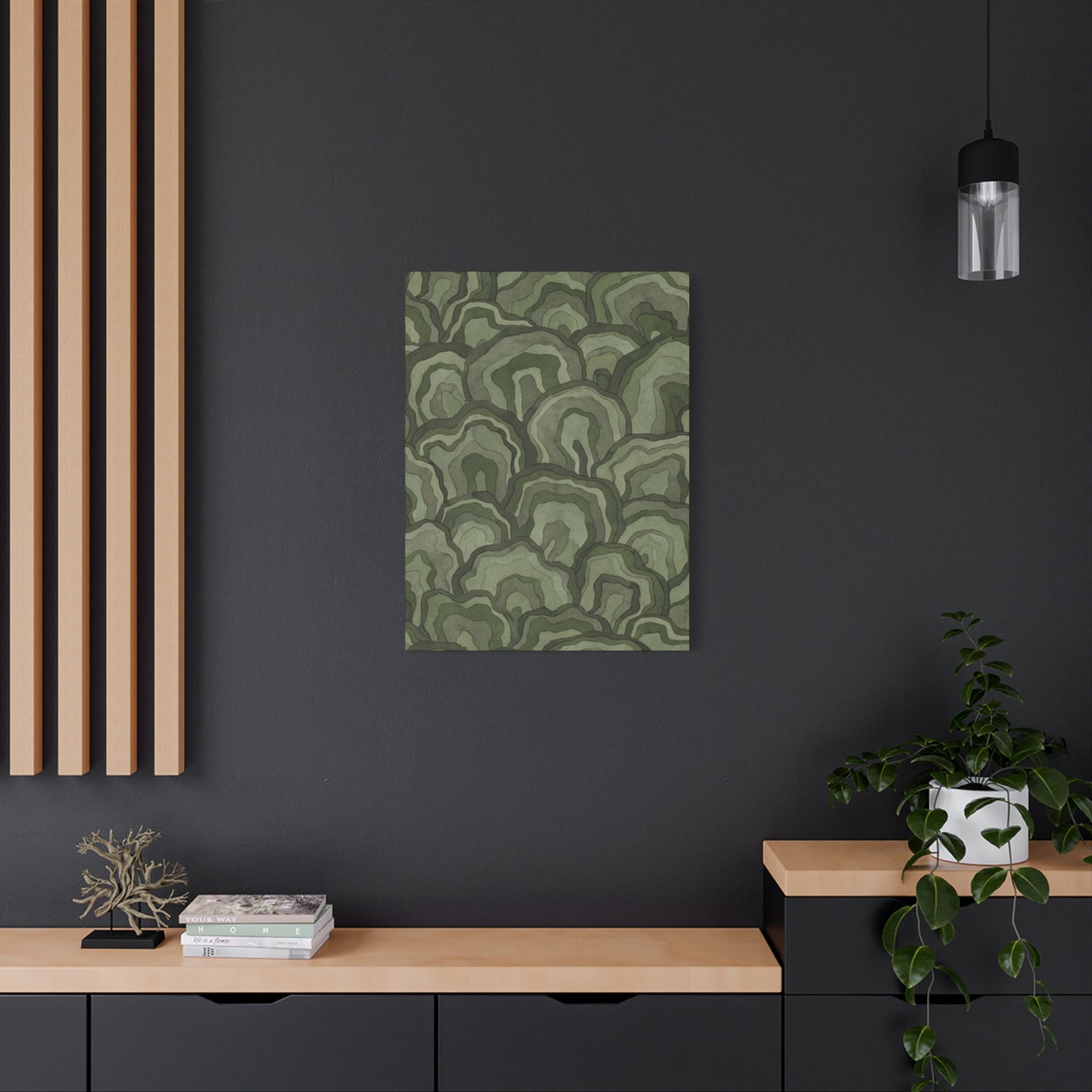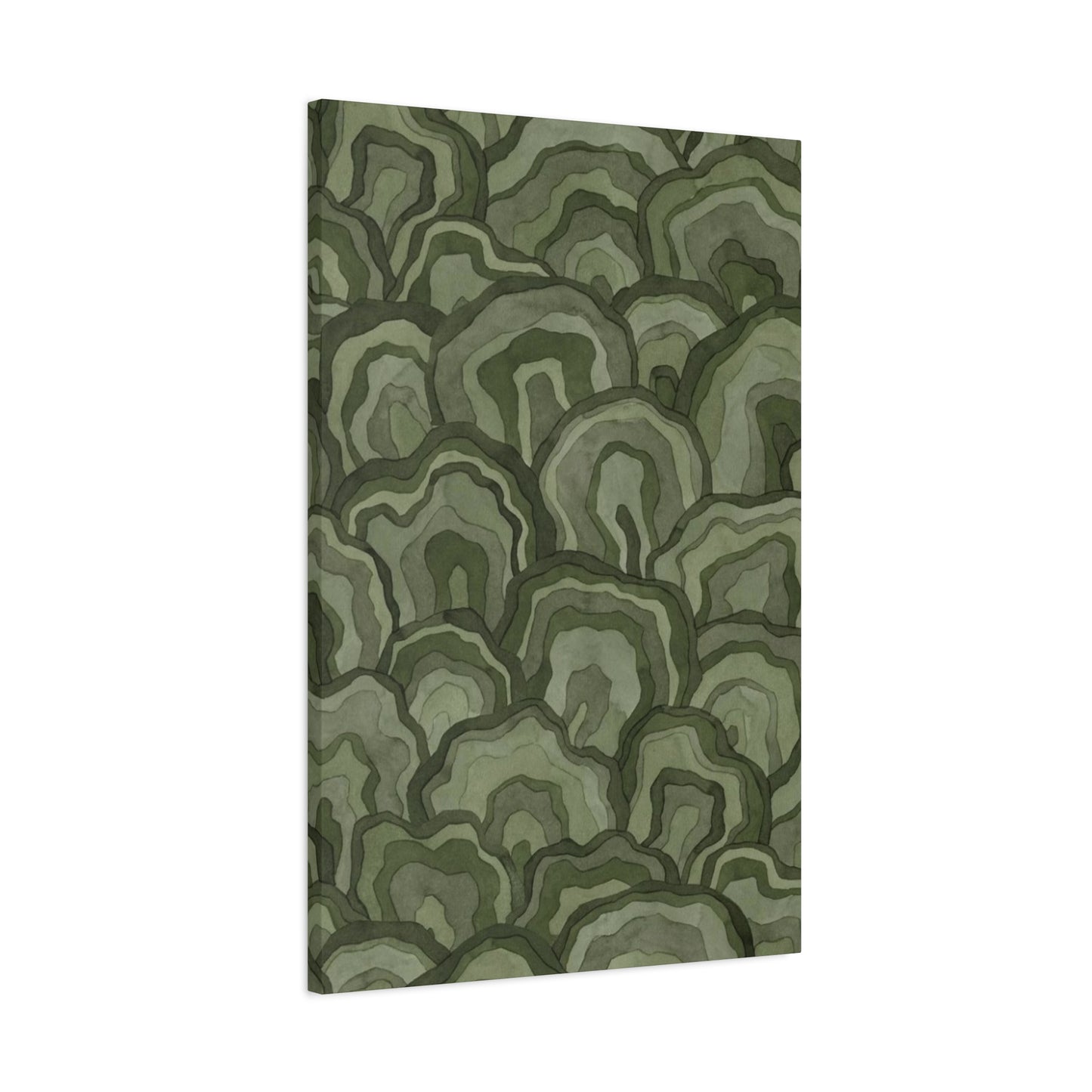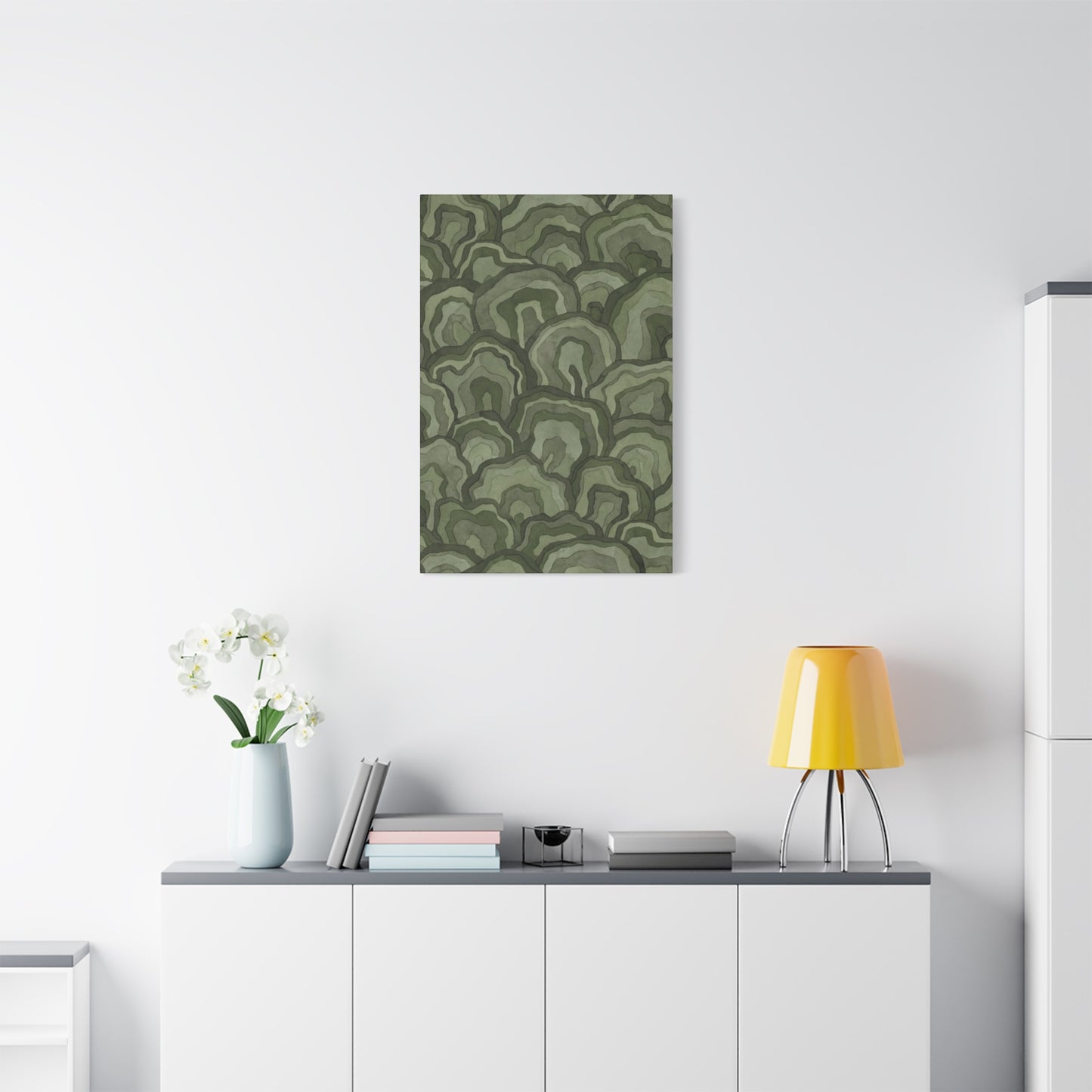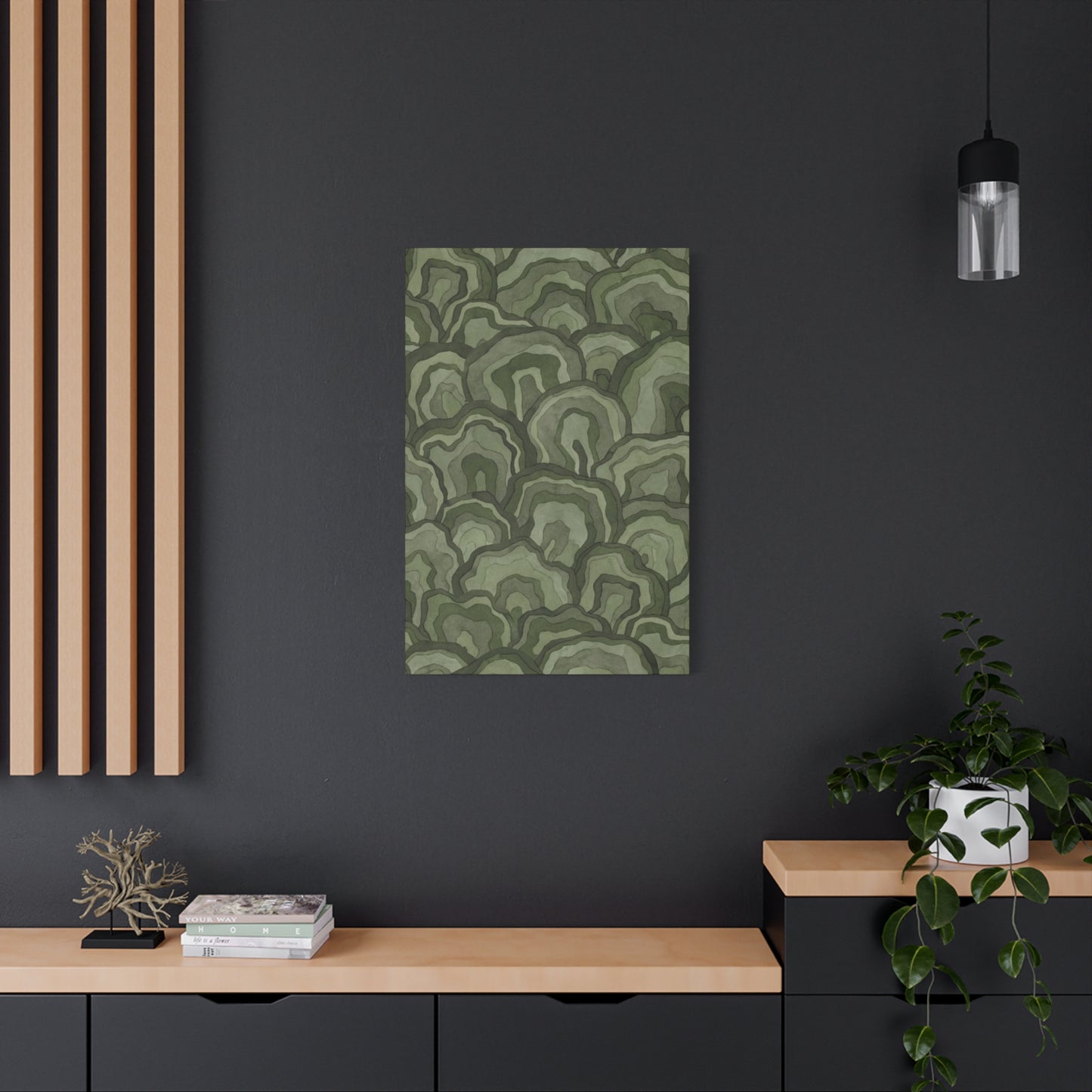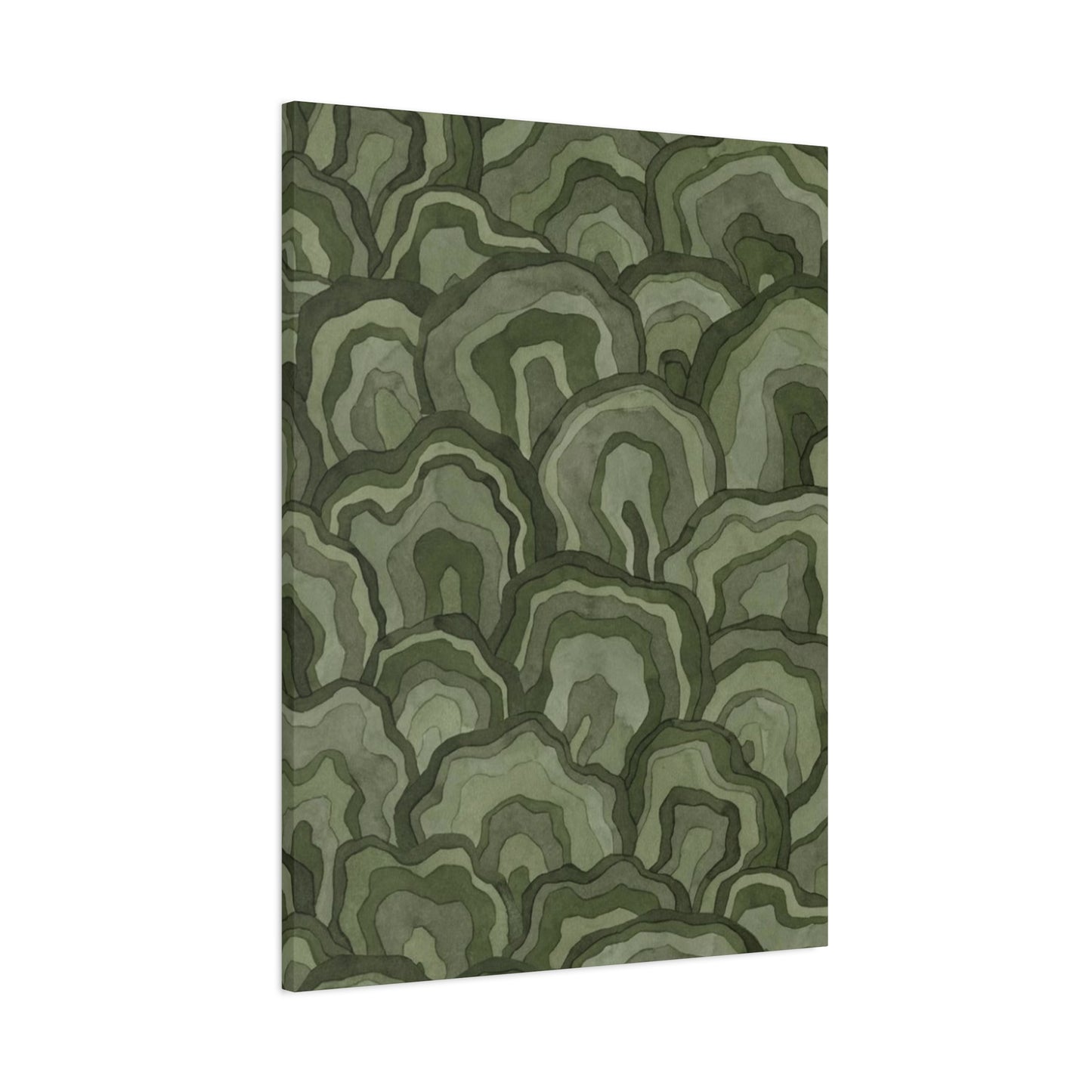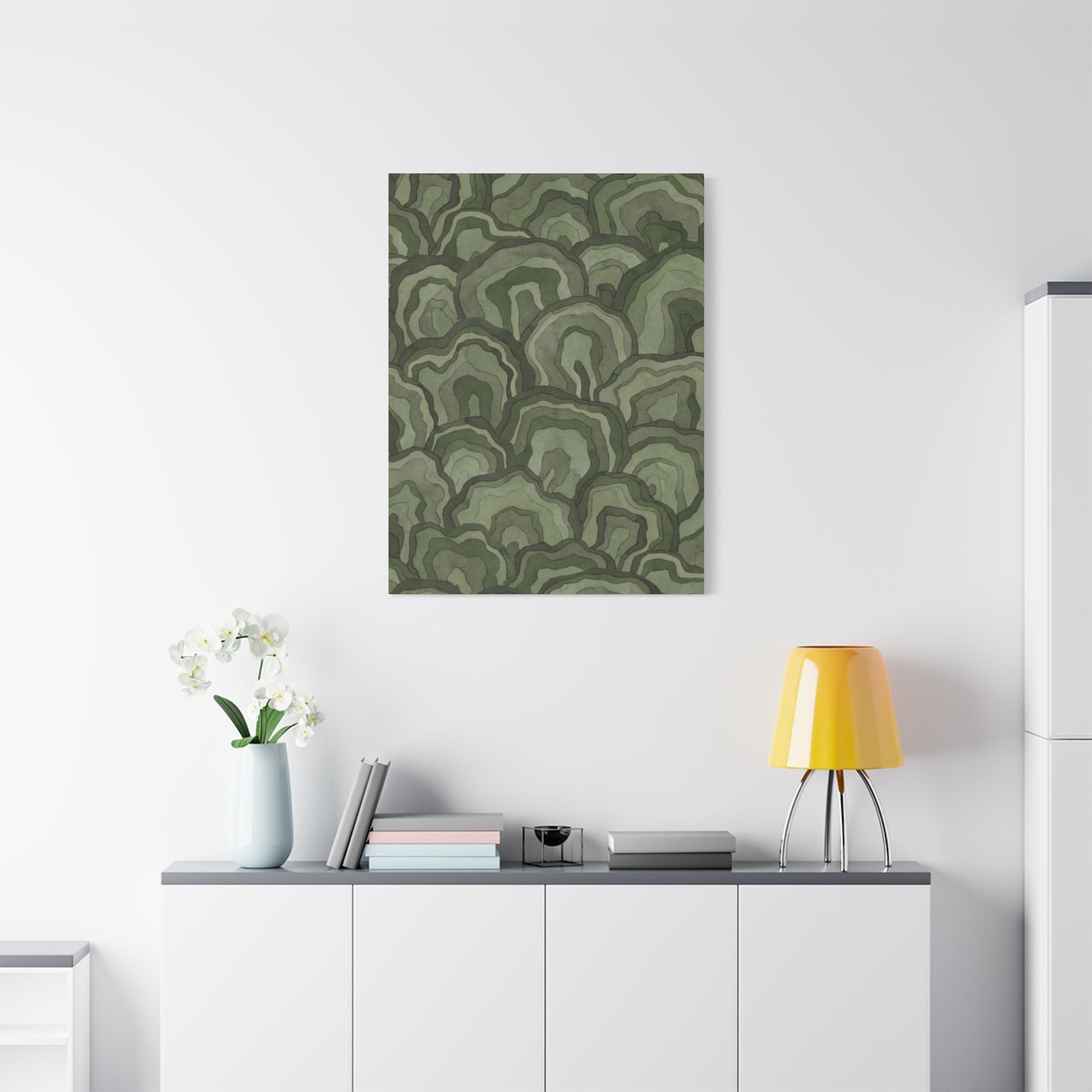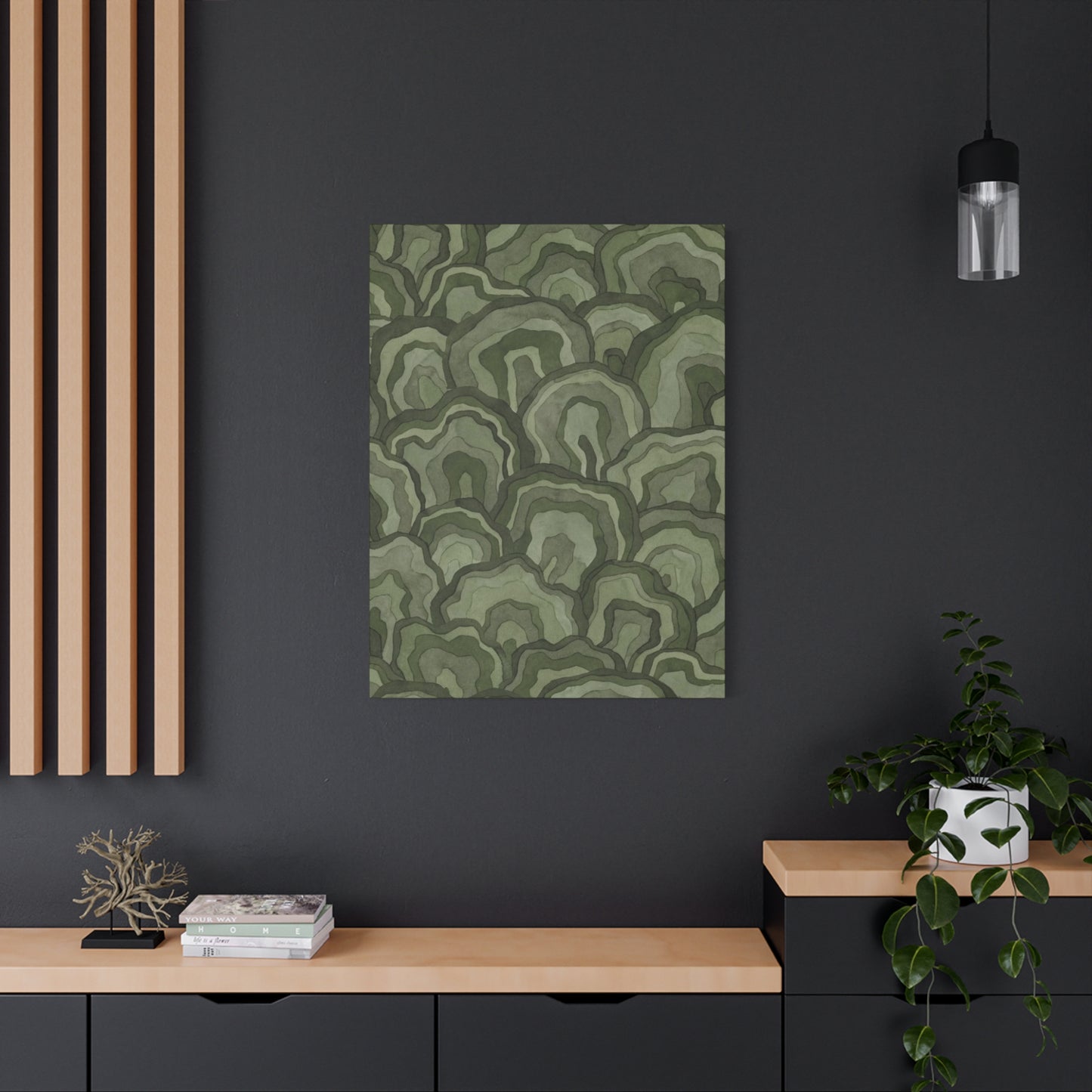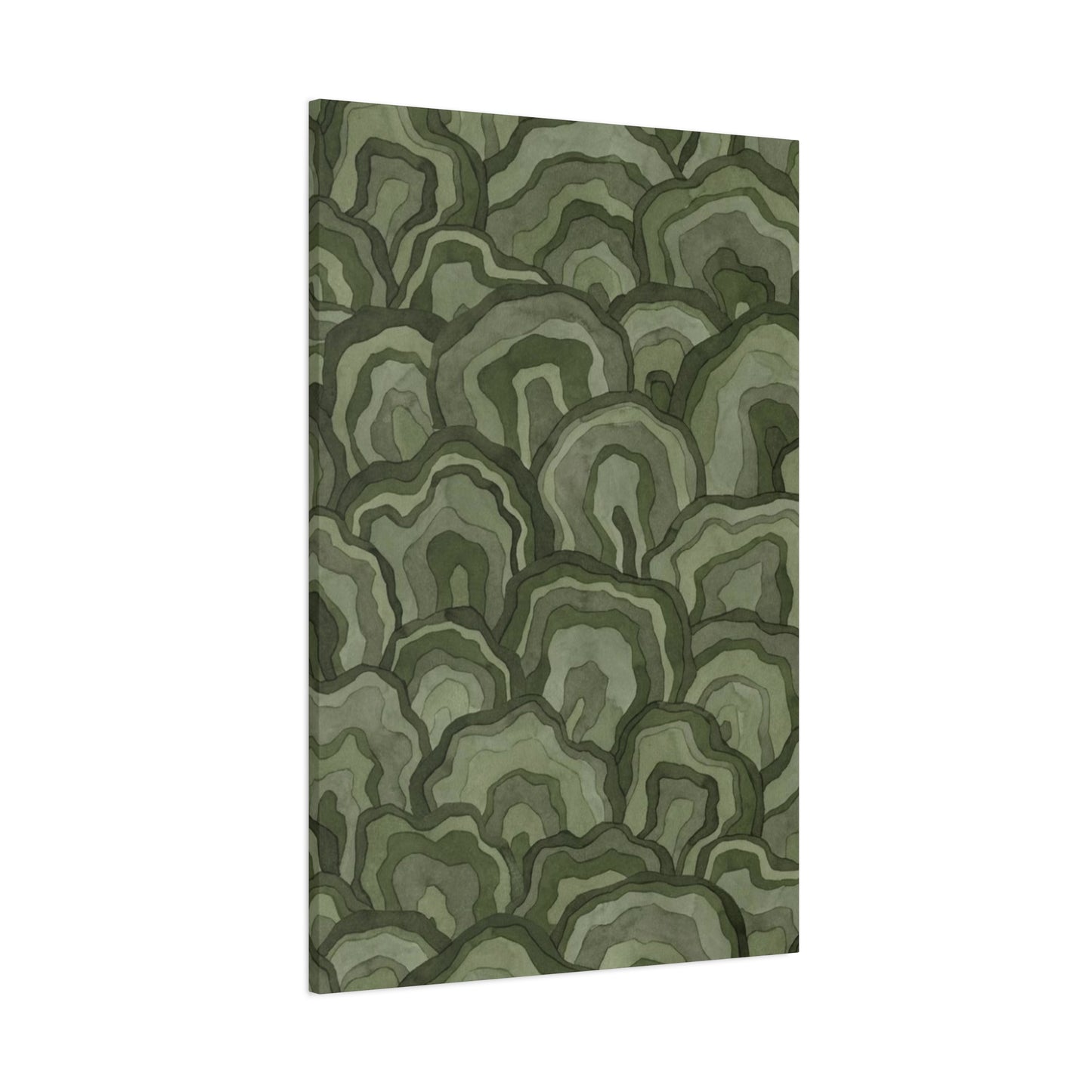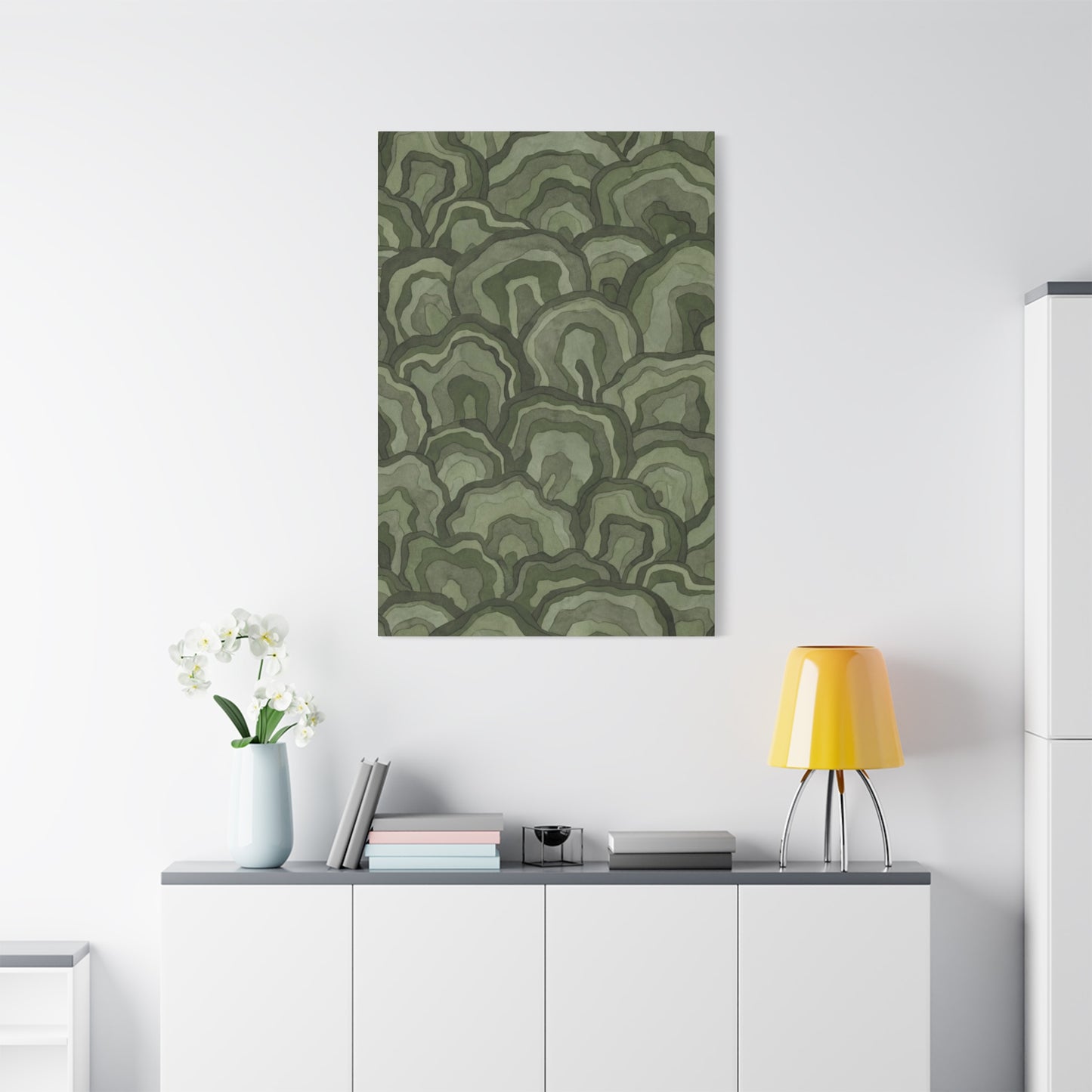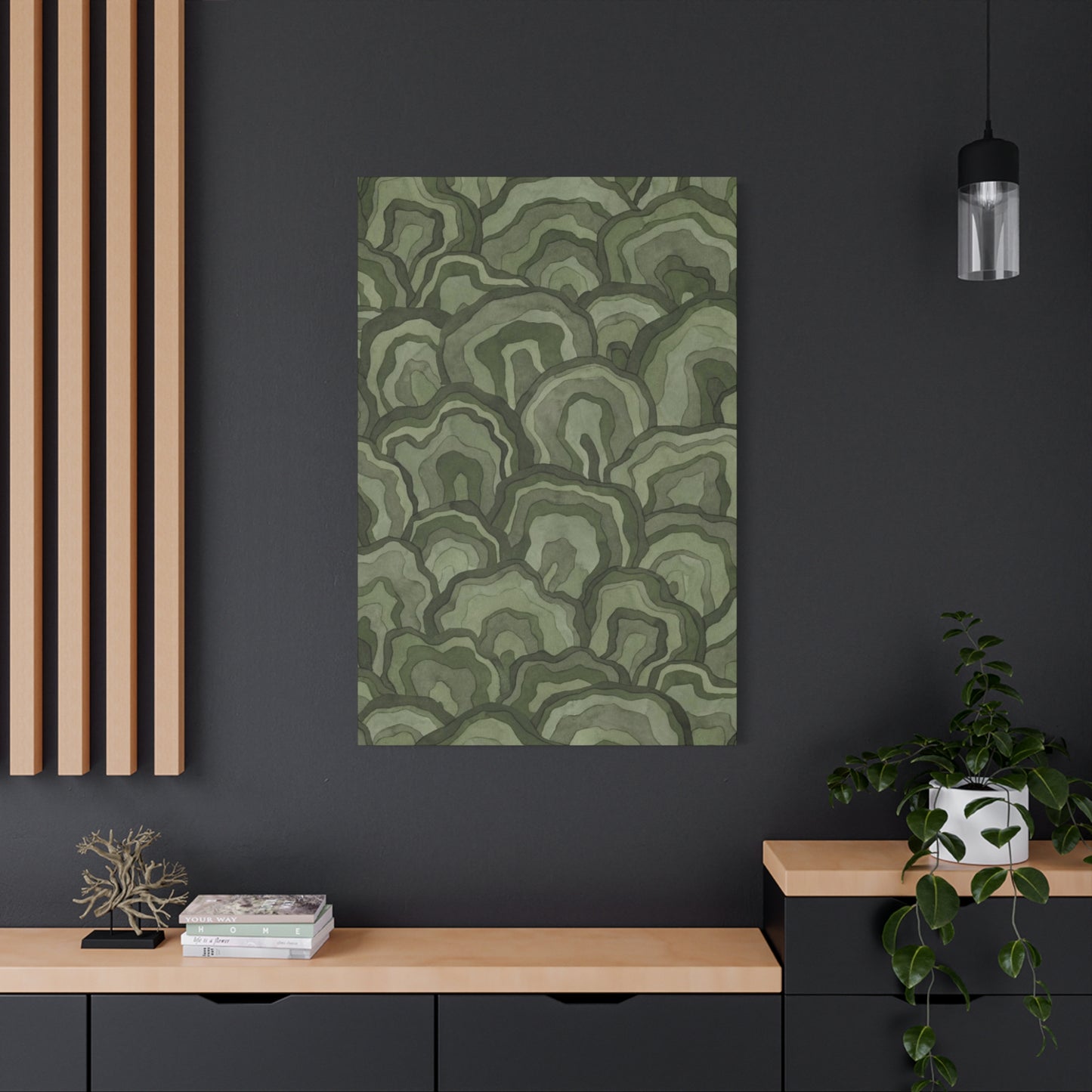Bringing Serenity Home: Olive Green Flower Wall Art for Contemporary Living Spaces
The world of interior design has witnessed a remarkable shift toward natural aesthetics and earth-connected color palettes in recent years. Among the most captivating trends emerging within this movement is the incorporation of olive green floral artwork into residential and commercial spaces. This sophisticated combination of botanical imagery and muted green tones creates an atmosphere of tranquility while maintaining visual interest that appeals to modern sensibilities. The relationship between humans and nature has always influenced how we design our living environments, and olive green floral wall art represents a perfect marriage between our innate desire for connection with the natural world and contemporary design principles that value simplicity, elegance, and mindfulness.
Olive green as a color carries historical significance that spans centuries and cultures. In ancient civilizations, olive branches symbolized peace, wisdom, and victory, while the color itself represented fertility, renewal, and the enduring cycles of nature. Today, this particular shade of green has found renewed appreciation among interior designers, homeowners, and art collectors who recognize its unique ability to create spaces that feel both grounded and uplifting. Unlike brighter greens that can overwhelm a space or darker greens that might create a heavy atmosphere, olive green occupies a perfect middle ground that brings warmth without intensity and sophistication without pretension.
The integration of floral elements into this color scheme adds another dimension of beauty and meaning. Flowers have long been subjects of artistic expression, appearing in everything from ancient frescoes to contemporary photography. When rendered in olive green tones, these botanical subjects take on a different character than their more vibrant counterparts. Rather than demanding attention through bold colors, olive green florals invite contemplation and create a sense of peaceful coexistence with their surroundings. This subtle approach to floral art reflects a broader cultural movement toward mindfulness and the appreciation of understated beauty in everyday life.
Elegant Olive Green Floral Wall Art
The concept of elegance in interior design has evolved significantly over the decades, moving away from ornate embellishments and ostentatious displays toward more refined and thoughtful approaches. Olive green floral wall art embodies this modern interpretation of elegance through its restraint, balance, and attention to organic beauty. These pieces work wonderfully in spaces where sophistication is desired without the formality that traditional floral artwork might impose. The elegance comes not from elaborate gold frames or complex arrangements but from the inherent grace of botanical forms combined with the timeless appeal of earth tones.
When selecting elegant olive green floral wall art for your space, consider the scale and composition of the pieces. Large-scale botanical prints can serve as stunning focal points in living rooms, dining areas, or master bedrooms, creating drama through size rather than color intensity. The olive green palette ensures that even substantial pieces maintain a sense of harmony with their surroundings rather than dominating them. Smaller pieces can be arranged in galleries or groupings, allowing you to create visual narratives that guide the eye through your space while maintaining cohesion through the consistent color theme.
The elegance of these pieces also lies in their versatility. Unlike artwork that makes bold color statements, olive green florals can adapt to various interior styles. In minimalist spaces, they provide necessary warmth and connection to nature without disrupting the clean aesthetic. In more traditional settings, they offer a fresh perspective that updates classic sensibilities. Even in eclectic or bohemian interiors, olive green floral art contributes a grounding element that helps diverse pieces coexist harmoniously. This adaptability makes these pieces wise investments for homeowners who appreciate the ability to refresh their spaces without replacing major artwork.
The production quality of elegant olive green floral wall art matters tremendously in achieving the desired effect. High-quality printing techniques preserve the subtle variations in tone that give depth to botanical subjects, while proper canvas preparation ensures longevity and maintains the artwork's visual impact over time. When evaluating pieces, look for rich color saturation that doesn't appear flat or washed out, clear details in the floral elements that suggest careful attention to source material, and finishing techniques that protect the artwork while maintaining its natural appearance. Premium pieces often feature hand-stretched canvas over wooden frames that prevent warping and ensure the artwork hangs beautifully for years to come.
Lighting plays a crucial role in showcasing elegant olive green floral wall art effectively. Natural light brings out the subtle variations in tone throughout the day, creating different moods as sunlight shifts from morning brightness to afternoon warmth to evening softness. However, direct sunlight should be avoided to prevent fading over time. Artificial lighting can be strategically positioned to highlight textures and create depth, with warm-toned lights generally complementing olive green better than cool-toned options. Picture lights or track lighting can add gallery-quality presentation to particularly important pieces, elevating their status within your interior design scheme.
The emotional impact of elegant olive green floral wall art should not be underestimated. These pieces create environments that feel collected and curated rather than decorated in haste. They communicate values of sustainability, connection to nature, and appreciation for subtle beauty, all of which resonate deeply with contemporary lifestyles. Guests entering spaces adorned with these pieces often comment on the calming atmosphere and sophisticated aesthetic, recognizing that thoughtful choices have been made in creating the environment. This positive response reinforces the wisdom of choosing artwork that serves both aesthetic and emotional purposes within our homes.
Subtle Beauty: Flower Patterns in Olive Green
The appreciation of subtle beauty represents a refined aesthetic sensibility that values nuance over obviousness and suggestion over declaration. Flower patterns rendered in olive green exemplify this approach to visual art, offering rewards to those who take time to notice details and appreciate understated elegance. In a world often dominated by attention-grabbing imagery and saturated colors, these pieces provide a refreshing alternative that encourages slower observation and deeper connection. The patterns themselves can range from realistic botanical illustrations to more abstract interpretations, but all share a commitment to restraint that allows the inherent beauty of natural forms to speak for itself.
Subtle flower patterns work particularly well in spaces where tranquility is a priority. Bedrooms benefit enormously from artwork that doesn't stimulate or energize but instead creates an atmosphere conducive to rest and relaxation. The olive green color scheme naturally lowers visual temperature, creating a cooler, more peaceful environment without resorting to stark whites or grays that might feel clinical. Meanwhile, the floral patterns provide visual interest that prevents the space from feeling empty or incomplete. This balance between interest and calm is difficult to achieve but incredibly valuable in creating truly restorative private spaces.
The patterns found in olive green floral art often draw inspiration from various botanical species, each bringing different associations and visual characteristics. Eucalyptus leaves, for example, offer graceful, elongated forms that create elegant linear patterns. Monstera leaves provide bold, dramatic shapes even when rendered in muted tones. Ferns contribute delicate, intricate patterns that reward close inspection. Olive branches themselves create beautiful, flowing compositions that directly reference the color scheme. Understanding the botanical sources behind these patterns can deepen your appreciation of the artwork and help you select pieces that resonate with your personal connection to nature.
Creating cohesive interiors with subtle flower patterns requires attention to how patterns interact with other design elements. These olive green florals generally pair beautifully with solid colors, allowing the patterns to shine without visual competition. When combining with other patterns, consider scale differences to prevent confusion, using small-scale patterns alongside larger floral designs or vice versa. Texture also plays an important role in spaces featuring subtle patterns. Incorporating woven textiles, natural wood grains, and organic materials creates depth and interest that complements rather than competes with patterned wall art.
The psychological effects of surrounding yourself with subtle beauty deserve consideration. Research in environmental psychology suggests that spaces featuring natural patterns and earth tones promote reduced stress, improved concentration, and enhanced overall wellbeing. Unlike dramatic or bold artwork that might create emotional peaks and valleys, subtle olive green floral patterns maintain a consistent, supportive presence in our environments. They become part of the daily experience rather than occasional focal points, contributing to a baseline sense of comfort and harmony that influences mood and behavior in positive ways over time.
Maintenance of artwork featuring subtle patterns is generally straightforward but important for preserving their beauty. Dust accumulation can dull the appearance of any wall art, making regular gentle cleaning essential. For canvas prints, a soft, dry microfiber cloth is usually sufficient for removing surface dust. Avoid using water or cleaning solutions unless specifically recommended by the manufacturer, as these can damage prints or affect color integrity. Proper hanging techniques also matter, ensuring pieces remain level and secure without placing stress on hanging hardware that could eventually lead to damage or accidents.
The investment value of subtle floral patterns in olive green extends beyond immediate aesthetic appeal. These pieces tend to have enduring relevance because they don't rely on trendy colors or styles that quickly feel dated. The connection to nature and earth tones has proven consistently popular across design movements, suggesting these pieces will remain attractive and appropriate for years to come. Additionally, the subtle nature of these patterns means they're less likely to cause visual fatigue, a common problem with more intense or complex artwork that homeowners eventually tire of and feel compelled to replace.
Botanical Calm in Olive Tones
The pursuit of calm environments has become increasingly important in modern life, where constant connectivity, busy schedules, and urban living often create stress and overstimulation. Botanical artwork in olive tones directly addresses this need by bringing elements of nature's tranquility into interior spaces. The color olive itself has inherent calming properties, falling into the spectrum of greens that humans have evolved to associate with vegetation, growth, and safe natural environments. When combined with botanical subjects, this calming effect is amplified through the subconscious recognition of plants as life-giving, oxygen-producing elements that support human existence.
Creating botanical calm through art selection involves understanding how different plant forms affect our perception and emotions. Soft, rounded leaf shapes tend to feel more calming than sharp, angular forms. Flowing compositions that suggest gentle movement create more peaceful impressions than rigid, geometric arrangements. Sparse designs with ample negative space allow the eye to rest and promote mental clarity, while denser compositions can still feel calm if rendered in harmonious olive tones that prevent visual chaos. Consider your personal response to different botanical forms when selecting art, paying attention to which images naturally slow your breathing and ease tension in your body.
The placement of botanical calm artwork significantly influences its effectiveness in creating peaceful environments. In home offices or study areas, positioning calming botanical art within your line of sight during work can provide visual breaks that reduce eye strain and mental fatigue. In entryways, these pieces set a tone of tranquility that helps transition from the outside world to your private sanctuary. In bathrooms, where relaxation rituals like bathing occur, botanical olive green art reinforces the space's purpose as a retreat from daily demands. Thoughtful placement ensures these pieces actively contribute to creating the calm atmosphere you desire rather than simply decorating walls.
The relationship between botanical calm and biophilic design principles deserves exploration. Biophilic design recognizes that humans have an innate connection to nature and benefit physically and psychologically from contact with natural elements. When actual plants aren't practical or sufficient, botanical artwork serves as a valuable substitute or supplement, providing visual connection to nature that still triggers positive responses. Research has shown that even representations of nature can lower blood pressure, reduce stress hormones, and improve recovery from mental fatigue. Olive green botanical art essentially brings these benefits into our spaces in a low-maintenance, permanent form.
The texture and finish of botanical calm artwork affect its impact on your space. Matte finishes generally feel more organic and natural than glossy surfaces, which can create reflections that disrupt the peaceful quality of the image. Canvas prints offer texture that adds dimension and interest without requiring actual three-dimensional protrusions that might collect dust or create shadows. Some pieces incorporate actual pressed botanicals or textured printing techniques that create subtle relief, adding tactile interest that deepens the connection to natural elements. Consider how different textures and finishes align with your overall design goals and the existing textures in your space.
Maintaining the calming quality of botanical olive green art over time requires occasional reassessment of your space. As our lives change, our need for different types of calm may evolve. A piece that once felt perfectly soothing might cease to serve that function as effectively. This doesn't necessarily mean replacing the artwork but perhaps relocating it to a different room where it better serves current needs. Alternatively, refreshing surrounding elements like wall color, furniture arrangement, or lighting can renew your connection to existing art and restore its calming influence. The goal is ensuring your environment continues actively supporting your wellbeing rather than becoming background scenery you no longer truly see.
The integration of botanical calm artwork with other calming practices creates synergistic effects. Spaces featuring olive green botanical art become ideal settings for meditation, yoga, or mindfulness practices. The visual environment supports the mental work of these activities by providing harmonious visual input that doesn't distract or stimulate. Similarly, these pieces complement aromatherapy practices particularly well, as the visual suggestion of plants pairs beautifully with natural scents like eucalyptus, sage, or cedar. Creating multisensory calm experiences through thoughtful combination of visual art, scent, sound, and texture maximizes the restorative potential of your living spaces.
Floral Prints That Bring Nature Indoors
The human need for connection with nature persists despite increasingly urban lifestyles and indoor-focused daily routines. Floral prints serve as bridges between our built environments and the natural world, bringing organic beauty into spaces where living plants might be impractical or insufficient. Olive green floral prints specifically offer nature connection without the high contrast and intense colors that characterize many traditional floral artworks. This makes them particularly effective at creating natural atmospheres that feel authentic rather than artificially cheerful or overly decorative.
Selecting floral prints that truly bring nature indoors requires attention to botanical accuracy and artistic interpretation. Prints based on actual botanical illustrations or photography carry authenticity that stylized or abstract florals sometimes lack. Viewers can often sense when floral subjects are rendered with knowledge of real plant forms versus generic flower shapes. This doesn't mean only photorealistic prints qualify, but rather that effective prints demonstrate understanding of how plants actually grow, how petals arrange themselves, how stems bend and leaves attach. This grounded quality in the artwork strengthens the psychological connection to actual nature.
The seasonal aspect of nature can be honored through strategic selection and rotation of floral prints. While olive green provides consistency across seasons, the specific botanical subjects might reflect seasonal changes. Spring bulb flowers, summer meadow blooms, autumn seed heads, and winter evergreen branches all offer floral or botanical subjects appropriate to different times of year. Some homeowners enjoy changing their artwork seasonally to maintain freshness and mark the passage of time, while others prefer pieces that feel appropriate year-round. Either approach can effectively bring nature indoors when executed with attention to botanical authenticity and color harmony.
The scale of floral prints matters when trying to create convincing nature connections indoors. Oversized prints that show flowers at larger than life size can feel surreal and decorative rather than natural. Conversely, prints showing botanicals at approximately their actual size or in natural groupings tend to feel more like windows into nature than decorative objects. Gallery walls combining multiple botanical prints at various scales can mimic the diversity found in actual gardens or natural landscapes, creating immersive experiences that transport viewers mentally into natural settings despite remaining physically indoors.
Combining floral prints with actual plants creates powerful nature connections that satisfy multiple senses and engagement modes. The artwork provides consistent, reliable nature imagery regardless of season or plant health, while living plants offer movement, growth, and authentic life that artwork cannot replicate. When selecting complementary plants for spaces featuring olive green floral art, consider species with similar coloring or form to create harmonious relationships. Pothos, snake plants, eucalyptus, and olive trees themselves all work beautifully alongside olive green botanical art, reinforcing the natural theme through repetition and variation.
The framing and presentation of floral prints influence how successfully they bring nature indoors. Heavy, ornate frames can make artwork feel more like museum pieces than nature windows, potentially reducing the sense of connection. Simple frames in natural materials like wood allow the botanical subjects to take precedence, maintaining focus on the nature connection rather than the art object itself. Frameless canvas prints or prints mounted on natural wood panels create even more organic presentations that blur boundaries between art and nature. The goal is allowing the botanical beauty to shine without decorative elements that remind viewers they're looking at artwork rather than nature.
The psychological research supporting nature connection through imagery continues growing, with studies demonstrating measurable benefits from viewing nature scenes and botanical subjects. These benefits include improved cognitive function, faster stress recovery, enhanced creativity, and even better physical healing outcomes in medical settings. Floral prints in olive green deliver these benefits in particularly gentle, sustainable ways that suit long-term living spaces. Unlike more intense nature imagery that might eventually feel overwhelming, the subdued palette ensures continued positive effects without visual fatigue.
Olive Green Blossoms for Modern Spaces
Modern interior design emphasizes clean lines, uncluttered spaces, and thoughtful minimalism, creating environments that feel open, organized, and intentional. Olive green blossoms fit beautifully within this aesthetic framework by providing organic interest without visual complexity or color chaos. The soft, muted tones blend seamlessly with modern color palettes typically built around neutrals, while the floral subjects introduce natural elements that prevent modern spaces from feeling cold or sterile. This combination makes olive green blossom artwork ideal for contemporary homes, apartments, and offices seeking that perfect balance between minimalism and warmth.
The philosophy behind modern design aligns well with the understated nature of olive green florals. Both value quality over quantity, meaning over decoration, and lasting appeal over trendy statements. Modern spaces typically feature fewer but more significant pieces rather than numerous small decorative items. Olive green blossom art fulfills the modern preference for substantial, meaningful pieces that contribute genuinely to the space's character. A single large-scale botanical print can satisfy the modern requirement for visual interest while maintaining the clean, uncluttered aesthetic that defines contemporary interiors.
Color coordination in modern spaces featuring olive green blossoms typically revolves around neutral foundations with earth-tone accents. White, gray, beige, and taupe walls provide perfect backdrops for olive green artwork, allowing the botanical subjects to stand out without competing with busy backgrounds. Furniture in natural materials like light woods, linen upholstery, and leather adds warmth while maintaining the modern aesthetic. Metallic accents in brass, copper, or matte gold complement olive green beautifully, adding sophistication without introducing colors that clash or compete. This restrained palette creates sophisticated environments where each element has purpose and visual breathing room.
The relationship between olive green blossom art and modern architecture deserves attention. Contemporary homes often feature large windows, open floor plans, and connections between indoor and outdoor spaces. Olive green botanical art reinforces these architectural features by extending the indoor-outdoor relationship through nature imagery. In spaces with limited natural views, this artwork provides essential nature connection that humanizes modern architecture's sometimes stark qualities. In spaces with abundant natural light and garden views, olive green florals complement rather than compete with actual nature visible through windows, creating harmonious relationships between real and represented nature.
Modern furniture design's clean lines and geometric forms create interesting contrasts with the organic curves and irregular patterns found in floral subjects. This tension between manufactured and natural forms adds visual interest that prevents modern spaces from feeling too rigid or controlled. The olive green color scheme bridges this contrast by being neither too natural looking to clash with modern materials nor too artificial to feel disconnected from the botanical subjects. This mediating quality makes olive green blossom art uniquely suited to spaces where industrial or modern materials dominate but some organic presence is desired.
Technology integration in modern homes presents opportunities for displaying olive green blossom art in innovative ways. Digital art frames allow rotation through collections of botanical images while maintaining consistent olive green color schemes. This technology suits people who enjoy variety but want to maintain cohesive aesthetics. However, traditional printed art offers advantages in modern spaces too, including no power consumption, no screen glare, and the subtle texture of quality prints that digital displays cannot replicate. Many modern homes successfully incorporate both traditional and digital art displays, using each where it serves the space best.
The sustainability values often associated with modern design align perfectly with nature-inspired olive green blossom art. Many contemporary homeowners prioritize eco-friendly choices, sustainable materials, and low environmental impact in their design decisions. Botanical art celebrates nature, potentially reminding viewers of environmental responsibility and connection to natural systems. When produced using sustainable printing methods, eco-friendly inks, and responsibly sourced materials, olive green floral art becomes part of an ethical approach to creating beautiful living spaces. This alignment of aesthetic and values creates deeper satisfaction with design choices.
Delicate Flower Patterns with Earthy Vibes
Delicacy in art and design refers to refinement, gentleness, and attention to subtle detail rather than weakness or fragility. Delicate flower patterns rendered in earthy olive green tones embody this refined quality while remaining grounded and substantial. The apparent contradiction between delicate and earthy resolves beautifully in these pieces, where intricate botanical details and fine patterns gain strength from the solid, reliable character of earth tones. This combination creates artwork that feels both precious and accessible, sophisticated yet approachable, making it suitable for formal and casual spaces alike.
The technical execution of delicate patterns requires significant skill and attention to detail. Fine line work that defines individual petals, stamens, or leaf veins demands precision in both original artwork creation and reproduction through printing. High-quality prints preserve these details faithfully, allowing viewers to discover new intricacies even after repeated viewing. When evaluating delicate floral patterns, look closely at the finest details to assess print quality. Blurred edges, broken lines, or loss of detail in intricate areas indicate lower quality production that won't deliver the visual satisfaction these pieces promise. Premium reproduction techniques maintain clarity and precision throughout the entire image.
Earthy vibes in olive green floral art come from both color selection and compositional choices. Beyond the olive green itself, earthy pieces often incorporate complementary tones like terracotta, warm browns, soft creams, and muted golds. These colors reference soil, sand, stone, and sunlight, grounding the florals in natural contexts. Compositions might include elements beyond flowers, such as stems, leaves, roots, or seed pods that emphasize the complete plant rather than only its showiest parts. This holistic approach to botanical subjects reinforces earthy authenticity, reminding viewers that beautiful flowers are parts of complete organisms connected to earth and ecosystems.
The pairing of delicate patterns with earthy vibes creates particular emotional resonances. The delicacy invites gentle attention and careful observation, encouraging mindfulness and present-moment awareness. The earthy qualities provide grounding and stability, preventing the delicacy from feeling ethereal or disconnected. Together, these qualities create artwork that soothes anxiety, promotes centeredness, and supports emotional regulation. For people dealing with stress, overwhelm, or the scattered feeling that modern life often creates, surrounding themselves with delicate yet earthy floral patterns provides subtle but meaningful support for mental and emotional wellbeing.
Interior spaces that benefit most from delicate earthy floral patterns include those dedicated to self-care, creativity, and intimate gatherings. Bathrooms become spa-like retreats when adorned with these pieces, especially when paired with natural materials, soft textiles, and warm lighting. Home studios or craft rooms gain inspirational atmosphere from delicate patterns that stimulate creativity without overwhelming the senses. Reading nooks, meditation corners, and small sitting areas become sanctuaries when these gentle yet grounded images provide visual accompaniment. The scale of these spaces suits the contemplative nature of delicate patterns better than large, busy common areas might.
The cultural associations with flowers and earth vary across traditions but generally carry positive meanings related to growth, beauty, fertility, and life cycles. Delicate flower patterns in earthy tones can honor these universal themes without specifically referencing any single cultural tradition, making them appropriate for diverse households. However, specific botanical subjects might carry particular cultural significance worth considering. Lotus flowers hold special meaning in Asian traditions, roses carry symbolism in Western contexts, and marigolds feature prominently in Latin American celebrations. Understanding these associations can add layers of personal meaning to your art selections.
Creating cohesive environments with delicate earthy patterns involves careful attention to competing visual elements. These subtle patterns work best when surrounding decor doesn't fight for attention. Busy wallpapers, boldly patterned textiles, or numerous small decorative objects can overwhelm delicate floral art, reducing its impact. Instead, allow these pieces to provide the pattern interest in otherwise calm, neutral spaces. This restraint honors the delicate nature of the patterns while ensuring they contribute meaningfully to the overall design. The result feels curated and intentional rather than accidentally under or overdone.
A Touch of Nature with Olive Green Florals
The concept of adding just a touch of nature acknowledges that full-scale biophilic design isn't always practical or desired, but some nature connection remains important for wellbeing. Olive green florals provide this measured nature touch beautifully, offering significant benefits without requiring major design overhauls or extensive plant care routines. For people living in urban apartments, working in windowless offices, or managing homes with challenging growing conditions, these pieces become lifelines to nature that sustain psychological wellbeing despite limited access to outdoor environments or living plants.
Starting with a touch of nature through a single olive green floral piece can begin transformative relationships with your space. Notice where your eye naturally rests when you enter rooms or where you spend focused time. These locations are prime candidates for nature-touch artwork that will receive regular attention and provide consistent positive impact. A piece placed opposite your bed provides morning views that can influence your entire day's mood. Art positioned behind your workspace enters your peripheral vision during tasks, offering subconscious reassurance and connection. Strategic placement ensures maximum benefit from minimal intervention.
The cumulative effect of touches of nature throughout a home creates surprising transformation. While no single piece dramatically changes a space, several olive green floral artworks distributed across rooms establish a nature-connected atmosphere that permeates the entire living environment. This distributed approach works particularly well in apartments or homes where major renovations aren't possible. Each piece contributes a touch of green, a botanical reference, a moment of organic beauty that collectively shifts the entire home's feeling from purely built environment to nature-integrated sanctuary.
Balancing nature touches with other design priorities requires thoughtfulness but offers flexibility. Olive green florals accommodate diverse styles precisely because they provide nature connection without dominating spaces. In homes with existing strong design themes, whether industrial, traditional, or coastal, these pieces add nature touches without contradicting established aesthetics. The key lies in selecting pieces whose composition, scale, and framing complement existing elements. A rustic-framed botanical print suits farmhouse interiors, while a sleek frameless canvas works in modern lofts, yet both bring equivalent nature connection through their olive green floral subjects.
The psychological concept of nature dosing suggests that regular small exposures to nature or nature imagery can provide health benefits similar to less frequent but more intensive nature experiences. This research supports the value of touches of nature through olive green floral art throughout living and working spaces. Each glance at botanical imagery provides a micro-dose of nature connection that contributes to daily wellbeing. Over weeks and months, these accumulated moments add up to significant positive effects on stress levels, mood regulation, and overall life satisfaction.
Seasonal changes in natural light affect how olive green touches of nature appear in spaces. Winter's low, angled light brings out warmth in olive tones, while summer's bright light might make the same pieces feel cooler and fresher. This natural variation keeps the artwork feeling alive and responsive rather than static and fixed. Some homeowners enjoy this dynamic quality, while others might adjust lighting or swap pieces seasonally to maintain desired effects. Either approach honors the living, changing quality of nature that the artwork represents.
Budget-conscious approaches to adding nature touches through olive green florals are entirely possible. High-quality prints in simple frames or mounted on boards provide authentic nature connection at accessible price points. Starting with smaller pieces and gradually expanding your collection spreads costs over time while allowing you to discover your preferences and learn what works best in your specific spaces. Thrift stores and estate sales sometimes yield surprising finds of vintage botanical prints that bring character and sustainability along with nature connection. The investment doesn't need to be substantial to generate meaningful impact on your daily experience of home.
Soft and Stylish Floral Wall Decor
The combination of softness and style might seem contradictory in a design world that often associates style with boldness and impact. However, truly sophisticated design recognizes that softness itself can be a powerful style statement, especially in contexts where everyone else is shouting for attention. Soft, stylish floral wall decor in olive green tones demonstrates confidence in restraint, communicating that beauty doesn't require force or volume. This approach appeals particularly to people who value subtlety, who find loud design exhausting, and who seek living environments that support rather than stimulate.
Softness in floral decor manifests through several visual qualities. Color saturation remains subdued rather than vivid, with olive green's natural mutedness perfectly embodying this principle. Edges might be slightly softened or blurred rather than sharply defined, creating dreamy rather than crisp appearances. Compositions favor flowing, organic arrangements over rigid geometric patterns. Backgrounds often fade into neutral tones rather than providing high contrast. These technical choices collectively produce visual gentleness that reads as softness while maintaining artistic integrity and design sophistication.
Style in this context means considered choice, design awareness, and aesthetic intentionality rather than following trends or making bold statements. Stylish floral decor demonstrates understanding of composition, color theory, and visual balance. It shows awareness of how art relates to surrounding elements and how spaces come together cohesively. Stylish choices reflect personal taste rather than copying showrooms, though they might draw inspiration from professional design. The stylishness of soft olive green florals lies partly in their ability to look current without being obviously trendy, ensuring they'll remain attractive as fashions change.
Creating stylish vignettes around soft floral decor involves thoughtful selection of complementary objects and furnishings. A stylish bedside area might feature olive green floral art above a simple wooden table with a ceramic lamp, small plant, and favorite book. A stylish dining space could include floral art flanked by floating shelves displaying minimal ceramics in complementary tones. The key lies in editing, removing anything that doesn't serve the aesthetic, and ensuring each element relates to others through color, style, or purpose. This curated approach allows soft florals to shine without competing elements diluting their impact.
The texture interplay in stylish soft environments deserves careful attention. Smooth printed surfaces of wall art benefit from surrounding textural variety that adds depth and tactile interest. Woven baskets, linen curtains, wool throws, natural fiber rugs, and wooden furniture all contribute texture that makes spaces feel rich and layered despite soft color palettes. This textural complexity prevents soft, monochromatic spaces from feeling flat or boring. The olive green florals themselves might include textural printing techniques that add dimension, enhancing the overall textural conversation within the room.
Lighting design dramatically affects how soft, stylish florals present themselves. Harsh overhead lighting can flatten soft colors and eliminate the subtle variations that give these pieces depth. Instead, consider layered lighting with multiple sources at different levels. Table and floor lamps create pools of warm light that can highlight artwork beautifully. Dimmer switches allow adjustment based on time of day and desired atmosphere. Natural light through sheer curtains creates soft, diffused illumination that shows olive green florals at their best. Thoughtful lighting transforms good art into stunning focal points while maintaining the soft quality that makes these pieces special.
The evolution of personal style through soft floral decor offers interesting opportunities for self-expression. Many people begin with bolder design choices in youth and gradually move toward softer, more refined aesthetics as they mature and their priorities shift from making statements to creating sanctuaries. Olive green florals suit this evolution beautifully, offering sophistication and beauty without the visual aggression of bolder choices. This doesn't mean settling or becoming boring but rather gaining confidence to embrace gentleness as a legitimate style choice. The result is spaces that feel authentically aligned with who you are rather than who you think you should be.
Olive Tones Plus Flowers Equals Perfect Harmony
The mathematical precision suggested by this equation belies the organic, intuitive beauty that results from combining olive tones with floral subjects. Yet there is a kind of formula here worth understanding. Olive provides stability, neutrality with warmth, and connection to earth and foliage. Flowers provide structure, pattern, symbolic meaning, and celebration of natural beauty. Together they create harmony, the design principle of pleasing arrangement and relationship between elements. This harmony isn't accidental but results from inherent complementarity between the muted sophistication of olive and the organic interest of botanical forms.
Harmony in design differs from mere matching or coordination. Matched elements can feel sterile or boring, while harmonious elements maintain individual character while supporting overall unity. Olive green florals achieve harmony by presenting variation within consistent parameters. Different flower types, compositional approaches, and artistic styles can coexist when unified by the olive green color scheme. This allows for personal expression and variety while maintaining the cohesive feel that makes spaces restful and visually satisfying. Understanding this distinction helps in building art collections and designing rooms that feel collected rather than matched.
The practical application of this harmonious combination involves considering existing elements in your space and how olive florals will interact with them. If you have warm wood furniture, olive green complements beautifully by echoing the organic origins both share. If your palette currently includes grays or blues, olive introduces warmth that balances coolness without clashing. Existing plants or garden views relate naturally to olive floral art, creating dialogue between living and represented nature. Even in spaces with existing artwork in different colors, olive green pieces can often integrate successfully due to their neutral character and natural associations.
Creating harmony through repetition and variation represents a core design principle perfectly demonstrated by olive floral collections. Repetition of the olive green color scheme throughout multiple pieces creates unity and consistency. Variation in the specific flowers depicted, the artistic styles employed, the scales of the pieces, and their framing treatments maintains interest and prevents monotony. This balance between repetition and variation allows you to build substantial art collections without redundancy or chaos. Each piece relates to others while contributing something unique.
The harmony achieved through olive florals extends beyond visual pleasure to psychological benefits. Harmonious environments reduce cognitive load, the mental effort required to process visual information. When surroundings feel cohesive and balanced, our brains expend less energy making sense of our environment, leaving more mental resources for tasks, relationships, and activities we value. This efficiency contributes to the restful quality of well-designed spaces. We emerge from time spent in harmonious environments feeling more refreshed than we might from visually chaotic spaces, even if we can't articulate exactly why.
Musical harmony provides a useful metaphor for understanding visual harmony in olive floral arrangements. Just as harmonious musical chords combine different notes that sound pleasing together, harmonious visual arrangements combine different elements that look pleasing together. The olive green acts as a tonic note, providing a foundation or home base, while different floral subjects, like different instruments or melodic lines, add interest and complexity without creating discord. Neither element would be as satisfying alone as they are in combination, just as single notes lack the richness of chords and melodies.
The sustainability of perfect harmony deserves consideration. Unlike trendy combinations that excite initially but fatigue quickly, harmonious pairings like olive and florals endure because they satisfy fundamental aesthetic preferences rather than capitalizing on temporary fashions. This enduring quality makes olive green floral art wise long-term investments. You're unlikely to tire of these pieces or feel they've become dated, meaning they continue providing value and pleasure for years. This sustainability applies both to your ongoing satisfaction and to the environmental implications of choosing lasting pieces over disposable decor that requires frequent replacement.
Freshen Up Your Walls with Floral Prints
The concept of freshening relates to renewal, reinvigoration, and clearing away stale energy or appearance. Walls tend toward staleness because we grow accustomed to whatever we see daily, eventually ceasing to notice it at all. This habituation serves useful functions in filtering unnecessary information but means our environments stop providing positive input even when they theoretically remain attractive. Freshening walls with new floral prints breaks this habituation, making us notice and appreciate our surroundings again. The olive green color scheme particularly suits this refreshing function because it directly references growth, renewal, and spring freshness even while remaining appropriate year-round.
Timing wall refreshening strategically can maximize its impact. Many people feel motivated to update spaces with seasonal changes, particularly in spring and fall when we traditionally deep clean and reorganize. These natural transition points provide excellent opportunities to introduce new floral prints that renew your connection to your space. Life transitions like moves, career changes, relationship developments, or children leaving home also create
Conclusion
Bringing Serenity Home: Olive Green Flower Wall Art for Contemporary Living Spaces highlights the unique ability of art to transform interiors into calming, elegant, and visually cohesive environments. Olive green, with its muted yet rich tones, has long been associated with nature, balance, and tranquility. When paired with floral motifs, this color palette evokes a sense of serenity and understated sophistication, making it an ideal choice for contemporary living spaces seeking both style and harmony.
The appeal of olive green flower wall art lies in its versatility. From abstract depictions of petals and leaves to realistic botanical illustrations, the subtle yet vibrant tones create a soothing focal point in any room. Large-scale canvases can anchor a living area, while smaller prints or framed compositions can accentuate a gallery wall, complementing minimalist décor or more eclectic interiors. The natural color palette allows for easy coordination with neutral furniture, warm woods, and metallic accents, ensuring that the art enhances rather than overwhelms the space.
Floral imagery in olive green also brings emotional and psychological benefits. Studies in color psychology suggest that shades of green promote relaxation, reduce stress, and inspire feelings of balance and renewal. Coupled with the delicate forms of flowers, this wall art can foster a sense of calm, making bedrooms, lounges, or home offices more inviting and rejuvenating. Each glance at the artwork encourages mindfulness and connection with nature, even within urban environments where access to greenery may be limited.
Lighting plays a crucial role in emphasizing the elegance and depth of olive green floral art. Natural light enhances the richness of the green tones and brings out subtle textures in petals and leaves. In the evening, strategically placed accent lighting or soft ambient illumination can highlight details and create shadows that add dimension and visual interest. The interplay of light and color elevates the artwork, transforming it from a simple decorative element into a centerpiece that contributes to the room’s atmosphere.
Olive green flower wall art also offers lasting aesthetic appeal because it transcends seasonal trends. Unlike bright or overly saturated floral designs, the muted, natural tones integrate seamlessly into contemporary interiors year-round. This timeless quality ensures that your investment in high-quality canvas prints or framed pieces will continue to enhance your home for years, maintaining both relevance and elegance.
Moreover, incorporating this type of art into your space reflects a broader appreciation for nature-inspired design. The presence of organic forms and earthy hues fosters a harmonious connection between indoor living areas and the natural world, reinforcing a sense of well-being. Pairing olive green floral art with other botanical elements—such as potted plants, wooden décor, or textured fabrics—can create a cohesive, layered aesthetic that feels alive, serene, and inviting.
Ultimately, Bringing Serenity Home: Olive Green Flower Wall Art for Contemporary Living Spaces demonstrates how thoughtful design choices can elevate both the visual and emotional quality of your interiors. By selecting art that combines nature-inspired motifs with calming, sophisticated colors, you create spaces that nurture relaxation, creativity, and comfort. Olive green flower wall art is more than decoration—it is a reflection of harmony, balance, and timeless beauty.

















